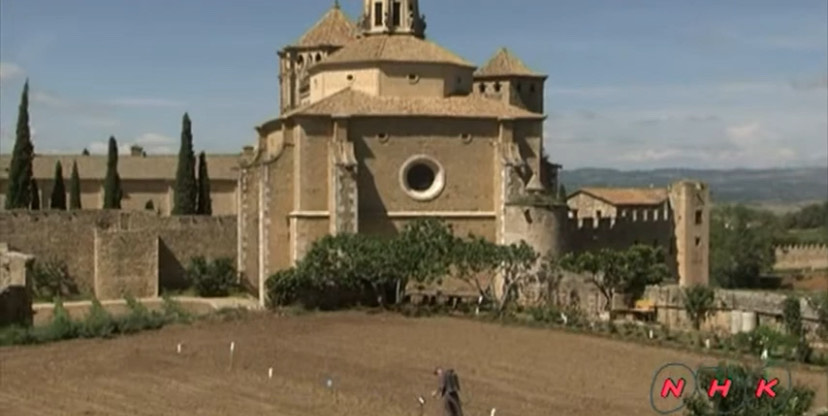The Monastery of Poblet is a historic complex located in the municipality of Vimbodí, in Catalonia, Spain, and is one of the largest and most extensive Cistercian monasteries in the world. Built between the 12th and 15th centuries, it is one of the largest monasteries in Spain and is notable for containing a fortified royal residence and housing the pantheon of kings of Catalonia and Aragon. The monastery was inscribed on the UNESCO World Heritage List in 1991.
Architectural and Structural Features
The Poblet Monastery complex consists of three separate structures surrounded by a defensive wall. The outermost structure, the first, contains 16th-century buildings such as warehouses, workshops, and residences for lay workers, as well as the Gothic Chapel of Sant Jordi, built in 1452. The fortified Golden Gate provides access to the second structure, which includes the hospital for the poor, the Romanesque Chapel of Santa Caterina, and Plaça Major (Main Square), which contains the remains of the treasury. The innermost, fortified third structure forms the core of the monastery and houses the church, cloister, and cloister rooms.
The defensive wall surrounding the complex is crenellated and reinforced by a series of square or polygonal towers, including the towers surrounding the Royal Gate. The church has a three-nave basilica plan with an apsidal east end, ambulatory, and transept. Renaissance architecture and royal tombs are among the church's interior elements. The large courtyard is dominated by Gothic forms. The oldest sections of the building date from the 12th and 13th centuries, and include the south gallery, which houses the lavatory, department building, dining hall, kitchen, central heating room, library, and dormitory.
About Poblet Monastery ( UNESCO )
Historical and Cultural Significance
Poblet is an expression of the Cistercian style of the 12th, 13th, and 14th centuries and an example of artistic achievement. The monastery houses masterpieces from different periods, such as the large gypsum altarpiece by Damià Forment. It is also one of the Cistercian monasteries that reflects the functional plan and spirit of the monastery throughout its structure.
The abbey served as a military complex, a royal palace, residence, and pantheon of the kings and queens of Catalonia and Aragon. Its library and scriptorium were renowned for their work in law and history from the 13th century onward. The abbey served as the custodian of dynastic history and royal relics. Its spiritual life has made it a central hub of national life from its founding until the present day.

View of Poblet Monastery ( UNESCO )
Preservation and Restoration
Monastic life continued at the monastery until the confiscation of church lands in 1835, which led to the monument's abandonment and looting. In 1849, the Commission of Historical and Artistic Monuments intervened to halt the deterioration process. Reconstruction began in 1930, and monastic life was revived in 1940. Since this reconstitution, sections such as the church, refectory, monastery building, and abbot's palace have been restored, returning the monastery to its pre-1835 state. The property retains all its features, reflecting its universal value.
The Poblet Monastery was declared a national monument in 1921 and is protected by various laws concerning Spanish and Catalan Historical Heritage. Management is carried out through the Tarragona Regional Cultural Heritage Commission and the Poblet Board of Trustees, while funding comes from various sources, including public institutions and entrance tickets.


